NIL
Is college basketball on the verge of a major game formatting change?
The game of college basketball has been favorited by fans for plenty of decades now. From the atmosphere and competition to all the components that make it what it is today. However, the NCAA is trying to change it. Besides speculation about expanding the 64-team format, which arguably creates the most incredible postseason event in […]

The game of college basketball has been favorited by fans for plenty of decades now. From the atmosphere and competition to all the components that make it what it is today. However, the NCAA is trying to change it. Besides speculation about expanding the 64-team format, which arguably creates the most incredible postseason event in all of sports, there are discussions about changing the game from teams playing halves to quarters, similar to the NBA.
College Basketball Report shared on X (formerly Twitter) on the matter:
There is “positive momentum” toward moving college basketball games from halves to quarters, per the NCAA. pic.twitter.com/F3bcqKtvyL
— College Basketball Report (@CBKReport) June 11, 2025
What are the chances this idea goes through? Who knows, really?
Personally, I believe that the college game is perfect as it stands. Why change something that has been working so well for so long? What’s the idea? Who truly wants to have quarters instead of halves? The audience members should be taken into account when decisions like this are surfacing.
If there are quarters, there will be more stoppage time and less fluidity in the pace of the game. Rather than two 20-minute halves, there may be four 10-minute quarters. Don’t forget that fouls delay the game’s rhythm, too. College games may end up feeling longer than ever, even though watching them typically lasts two hours (assuming overtime does not occur).
Whether the format of the game changes is entirely up to the NCAA, but its fans are probably not going to enjoy a different kind of college basketball. There’s a reason viewership for big games is high, and part of that are the two halves implemented into the product’s structure.
North Carolina has a hefty non-conference schedule next season, playing Michigan State in the Fort Myers Tip-Off, Kentucky on the road in Rupp Arena for the SEC-ACC challenge, Ohio State in the CBS Sports Classic, and, of course, Duke inside the Dean Dome and Durham. Just imagine if those games had quarters.
NIL
QB LaNorris Sellers rejected $8M transfer offer to stay loyal to Gamecocks
FILE – South Carolina quarterback LaNorris Sellers (16) reacts after scoring a touchdown in the second half of an NCAA college football game against Clemson, Saturday, Nov. 30, 2024, in Clemson, S.C. (AP Photo/Jacob Kupferman, FIle) (WCIV) — South Carolina’s breakout star quarterback, LaNorris Sellers, couldn’t think of anywhere else to play. After leading the […]
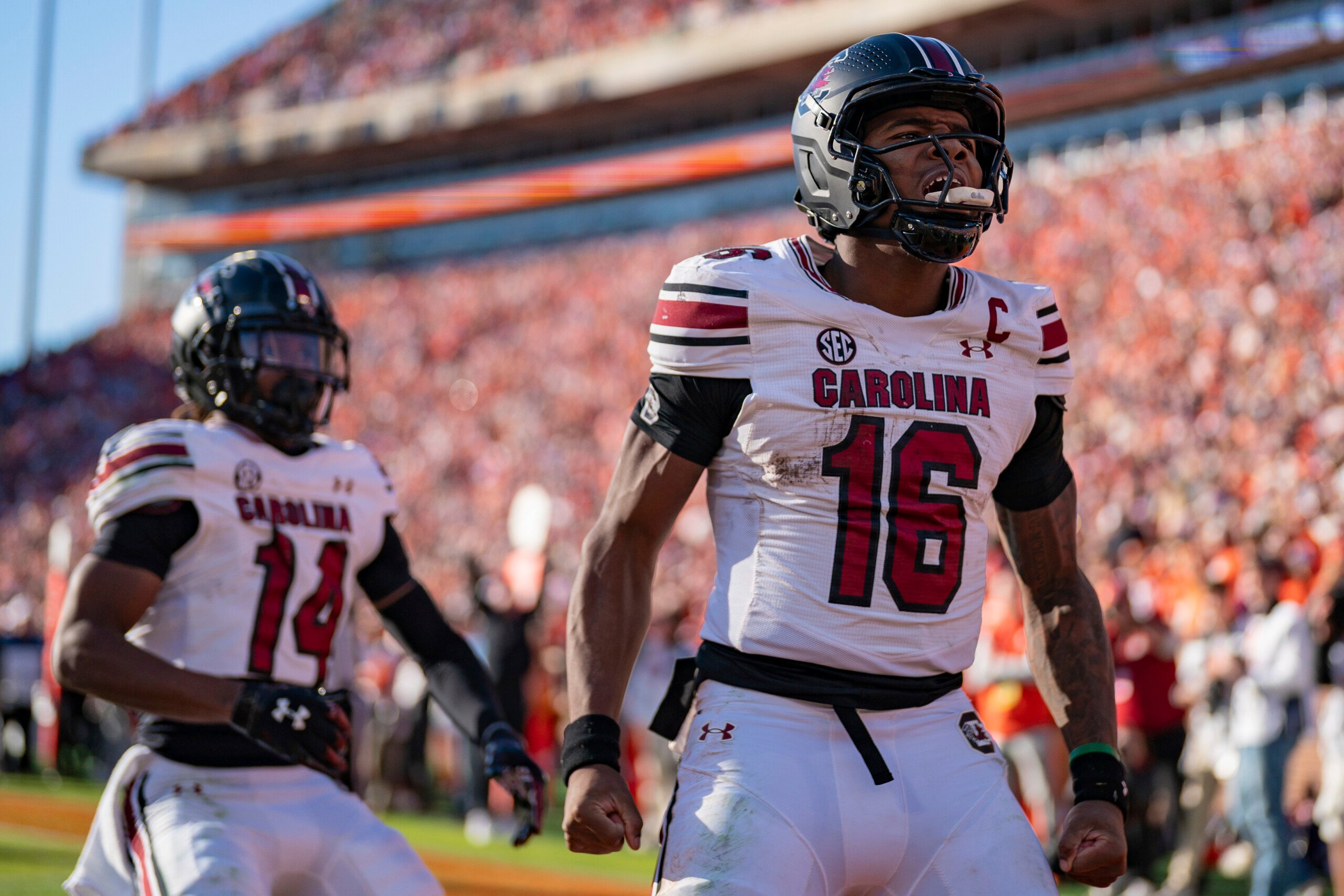

FILE – South Carolina quarterback LaNorris Sellers (16) reacts after scoring a touchdown in the second half of an NCAA college football game against Clemson, Saturday, Nov. 30, 2024, in Clemson, S.C. (AP Photo/Jacob Kupferman, FIle)
(WCIV) — South Carolina’s breakout star quarterback, LaNorris Sellers, couldn’t think of anywhere else to play.
After leading the Gamecocks to a 9-4 (5-3) record in the 2024 season, Sellers, a redshirt sophomore, proved that some things are worth more than money. Sellers’ father, Norris, told The Athletic’s Bruce Feldman that his son was offered a two-year, $8 million NIL offer from another school, which he declined.
“He was offered all kinds of crazy numbers,” Norris said. “I told him he could say, I’m gonna stay or I’m gonna go. By my two cents: It was to get into college on a scholarship, play ball, get our degree and go on about our business. This NIL deal came later. We didn’t come here to make money. We came here to get our education, play ball, and with schools calling, we’re not gonna jump ship because they’re offering more than what we’re getting. If it ain’t broke, don’t fix it.”
LaNorris echoed the sentiment, claiming that he wants to build something special in his home state.
“I’ve been playing football all of my life for free,” LaNorris said. “I’ve built relationships here, my family’s here, my brother’s here. There’s no reason for me to go someplace else and start over.”

South Carolina quarterback LaNorris Sellers looks to throw a pass during the first half of the Citrus Bowl NCAA college football game against Illinois, Tuesday, Dec. 31, 2024, in Orlando, Fla. (AP Photo/Phelan M. Ebenhack)
Sellers is just the latest quarterback in the college football ranks to command eye-opening amounts of money.
According to On3’s NIL valuation tracker, Arch Manning commands $6.8 million at the University of Texas. Carson Beck, who earned $4.3 million from the University of Miami, was not far behind.
Sellers has built a cult-like following after his slow start in Columbia.
He threw for 2,534 yards and 18 touchdowns. Sellers also pitched in on the ground, rushing for 674 yards and seven touchdowns.
The defining performance of Sellers’ first year as a starter came in a rivalry game against Clemson, where he ran for 166 yards and two touchdowns in a come-from-behind 17-24 win. He capped off that performance with an impressive 20-yard touchdown run on a third-and-16 play with one minute remaining.
With just one year as a full-time starter under his belt, Sellers is already ranked as a top-five draft pick in 2026, according to ESPN.
But until then, he is comfortable saying that no amount of money can buy him the happiness he felt playing for the Gamecocks.
“He’s made of the right stuff,” Gamecocks Head Coach Shane Beamer said. “He’s got a great family around him. He knows what he means to this state. LaNorris has a chance to leave a legacy here.”
NIL
Athletic programs’ culture more important than ever | News, Sports, Jobs
While waiting for the House v. NCAA settlement to conclude, I, like many other college football fans, had to finally accept that the amateurism model, in place for over a century, has come to an end. The settlement ruling, which has been five years in the making, results from the 2020 class-action antitrust lawsuit filed […]

While waiting for the House v. NCAA settlement to conclude, I, like many other college football fans, had to finally accept that the amateurism model, in place for over a century, has come to an end.
The settlement ruling, which has been five years in the making, results from the 2020 class-action antitrust lawsuit filed by Arizona State swimmer Grant House and Texas Christian University women’s basketball player Sedona Prince, along with other student-athletes.
I found it particularly interesting that the lawsuit was led by House and Prince, who do not participate in the top revenue-producing sports.As a swimmer, House participates in an Olympic sport, and swimming, along with sports like tennis and golf, will not benefit as much from the $20.5 million that schools will be allowed to share with athletes.
Women’s Division I basketball does generate a respectable profit, with NCAA figures for the 2019 season calculated at $600 million, and the NCAA will begin paying women’s teams “performance units” for their participation in the tourney for the upcoming season, with $15 million being awarded. The units will increase to $20 million for the 2026-27 season, then jump to $25 million the following year. Schools will receive payments on a continuous three-year basis in 2026. Men’s basketball teams have profited from performance units since 1991, and the men’s tournament brought in over $900 million for the 2024-25 season. Schools will continue to rake in millions of dollars from March Madness and the expanded College Football Playoff, but with the $20.5 million cap that will be split among student-athletes, the lion’s share of these profits will go to the major money-making sports of football and men’s basketball in the Power Four conferences, although female basketball stars like the University of Southern California’s JuJu Watkins and Louisiana State University’s Flau’jae Johnson should also see their earnings rise. Stars in these sports will continue to prosper financially from lucrative name, image and likeness deals made possible by the 2021 NCAA v. Alston ruling.
Athletes who played before the Alston decision will be compensated back to 2016, as U.S. District Judge Claudia Wilken approved a whopping $2.8 billion — which will be disbursed within 10 years — to reimburse those who competed before the current NIL era. As a Buckeye fan and alumna, I was very sorry that the stars of Ohio State’s 2014 national championship football team will not be able to cash in on their past laurels. I can only imagine the millions Cardale Jones, our third-string quarterback who led us to the title, would have made from his storybook run. Wideout Braxton Miller would have sold thousands of T-shirts with his signature spin move from his breathtaking performance against Virginia Tech that season. I’m sure many college athletes who won championships before 2016 are pondering what could have been if they had been allowed to accept endorsements. The House ruling will permit colleges and universities to pay student-athletes starting July 1, and as this next phase begins, the newly formed College Sports Commission will oversee NIL transactions and enforce new rules for the Power Four conferences. One significant benefit of the commission’s oversight is that it will be able to determine if athletes are seeking much more from university collectives than what their market value says they are worth, and many football coaches are hoping for a change to the transfer portal, which is currently open twice a year.
Knowing that the House settlement was inevitable, I have mixed feelings about this new era of college sports that continues to evolve. While I believe athletes should be paid fairly, direct payments from schools and NIL will take some focus away from academics and personal development. I continue to assert that the culture in athletic programs will now be more important than ever, and smaller schools probably have an advantage here in that NIL deals and revenue sharing will not be massive for their student-athletes.
NIL
New State Law Gives LSU Tigers Leg Up In Revenue Sharing
© Kirby Lee/Imagn Audio By Carbonatix As we move into the revenue sharing era of college sports, schools are getting more creative to find ways to generate more income. For some schools, that includes working with the state legislature, as is the case with a new law in Lousiana. Alex Schiffer of Front Office Sports reports that the state […]
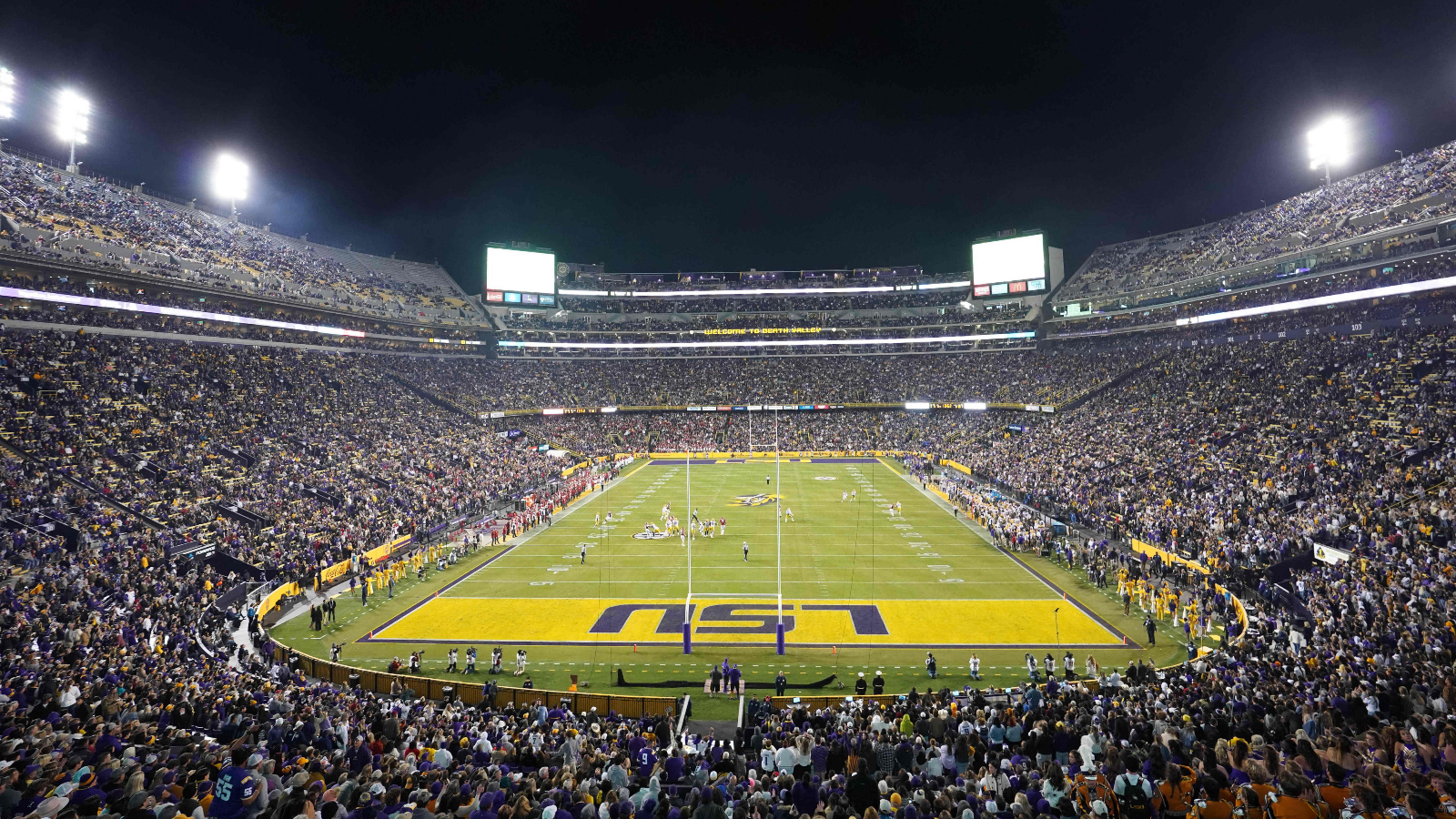

© Kirby Lee/Imagn

Audio By Carbonatix
As we move into the revenue sharing era of college sports, schools are getting more creative to find ways to generate more income. For some schools, that includes working with the state legislature, as is the case with a new law in Lousiana.
Alex Schiffer of Front Office Sports reports that the state of Lousiana is set to raise taxes on sports betting in order to distribute additional funds to its 11 state-sponsored universities, including the LSU Tigers.
The new bill, which must first be signed by governor Jeff Landry, is expected to raise more than $24 million. Landry is a Louisiana-Lafayette graduate but seemingly a big fan of the Tigers. Last football season, Landry backed a push to return a live tiger to the sidelines of games in Tiger Stadium.
LSU Tigers Set To Land Major Pay Day Thanks To New Louisiana Sports Gambling Tax
According to Schiffer, the new bill stands to raise the state’s 15% tax on online betting profits to 21.5%.
Additionally, “A quarter of the tax revenue, estimated to bring in $24.3 million, would be split evenly among the state’s 11 public universities that play in Division I football conferences. The money won’t be used for direct NIL payments
“Instead, it must be used for ‘for the benefit of student athletes,’ which includes scholarships, facility enhancements, and insurance, among other uses. The money could help free up other resources within the athletic department as schools adjust their books for revenue sharing.”
Meanwhile, the Tigers have emerged as one of the strong NIL players in college football. On3 Sports, led by five-star wide receiver Tristen Keys, currently ranks LSU’s 2026 class No. 2 in the country. Keys recently inked a lucrative NIL deal with Adidas, which is interesting given LSU’s current apparel deal with competitor Nike. Especially given the fact that Keys took a weekend visit to Tennessee, which is rumored to move from Nike to Adidas following the 2025-26 academic year.
NIL
Diego Pavia details how NIL offers have changed throughout college career
Diego Pavia has seen the NIL era of college football grow into what it is today as one of the biggest beneficiaries of it. The Vanderbilt quarterback has an estimated valuation of $1.6 million according to On3, making money that was unimaginable to college athletes only a few years ago. Even he wasn’t always raking […]


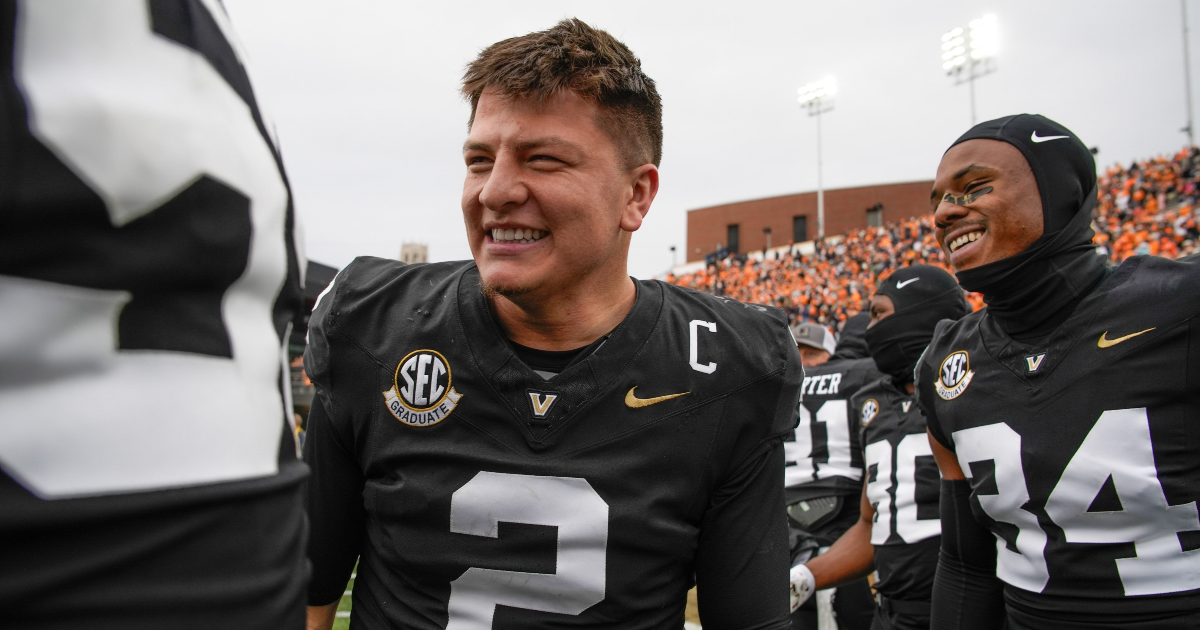
Diego Pavia has seen the NIL era of college football grow into what it is today as one of the biggest beneficiaries of it. The Vanderbilt quarterback has an estimated valuation of $1.6 million according to On3, making money that was unimaginable to college athletes only a few years ago.
Even he wasn’t always raking in that kind of cash in the early days of NIL. Pavia began his college career at the JUCO level in 2020, before NIL laws had even been passed. It wasn’t until he arrived at New Mexico State in 2022, one year after the first season of NIL, that he got his first deal.
But, as he explained in an appearance on the Bussin’ with the Boys podcast, that was paltry compared to what he was pulling in now. Despite starting eight of 12 games for the Aggies in the 2022 season, Pavia wasn’t even the highest paid player on his own team.
“First crack in the NIL game I was getting paid $1,400 at New Mexico State per month and I was pissed because Eli Stowers was getting paid $3,000 a month and he played tight end and I played quarterback,” Pavia said. “I’m like, ‘Man, f*** that. I need to go harder.’ It all worked itself out.”
Pavia found his form over the back half of his first season at New Mexico State, setting him up to enter 2023 as the clear starter. He would go on to throw for 2,973 yards and 26 touchdowns to nine interceptions while also rushing for 923 yards and seven scores.
The Aggies finished 10-5 that season and Pavia saw the dividends from his big year in the transfer portal. He was not only being offered a monthly pay that was in the six figures range, but gifts in addition to the payments as well.
“Coming from that $1,400 to these others schools were offering my like a car, houses and big time money. It’s like, ‘Holy sh*t,’” Pavia said. “…I would have stayed at New Mexico State for $100,000. Then at Vandy, the quarterback they just brought in, they paid him way over $100,000 and they offered me $150,000, but I didn’t know that. I’m going from $1,400 to $150,000? I’m like, ‘Sign me up.’ So that’s how I took it last year.”
There was some question of whether Pavia would have any eligibility remaining for 2025 because he had played five seasons already. However, the NCAA ruled to grant a waiver to players that did not count their JUCO seasons against eligibility, opening the door for him to play one more year.
Now he’ll get to continue reaping the benefits of NIL as he looks to lead Vanderbilt to its first ever College Football Playoff appearance. But even with all the money coming in, he has been smart with his finances thanks to his family and resources at the school.
“Vanderbilt does a good job of bringing in ex-players or alumni that are big-time people who work in the business. They come back and tell us about (financial literacy). We have probably 8-9 meetings on it. ..,I give it all to my mom and she handles it. So I’ve never touched a dime of my NIL.”
NIL
Ole Miss baseball transfer portal tracker
OXFORD, Miss. (WLBT) – Ole Miss baseball fell short after its loss to Murray State in the Oxford Regional earlier this month, but head coach Mike Bianco has already made some moves to improve the roster for the 2026 season. Who has transferred to Ole Miss so far? LHP Junior Grant Richardson (Grand Canyon) Richardson […]

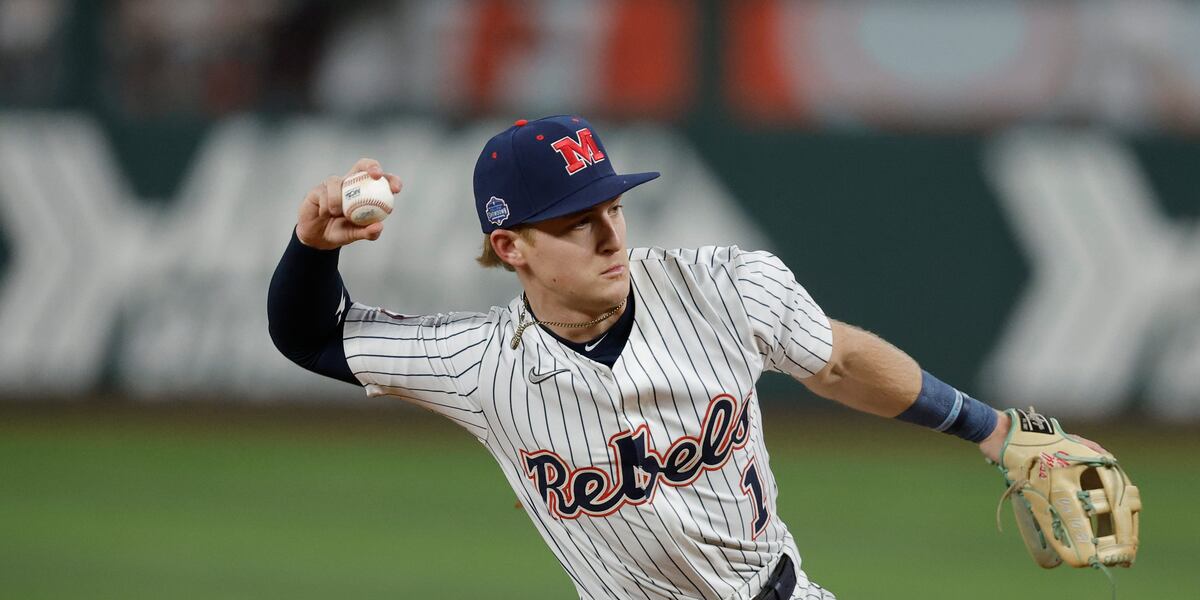
OXFORD, Miss. (WLBT) – Ole Miss baseball fell short after its loss to Murray State in the Oxford Regional earlier this month, but head coach Mike Bianco has already made some moves to improve the roster for the 2026 season.
Who has transferred to Ole Miss so far?
LHP Junior Grant Richardson (Grand Canyon)
Richardson missed the 2025 season after undergoing Tommy John surgery.
In 2024, he came out of the bullpen for his first six appearances of the season and then started his final eight games.
He finished that season with a 5-1 record with a 3.73 ERA. He struck out 70 batters against 30 walks in 50.2 innings as a sophomore.
OF Junior Daniel Pacella (Illinois State)
Pacella had an impressive junior season with the Redbirds, earning an All-MVC First-Team selection.
He started all 56 games in 2025, finishing the year with a .355 batting average with 20 home runs, two triples, 19 doubles, and 59 RBIs.
OF Junior Tristan Bissetta (Clemson)
The 2025 season was cut short for Bissetta due to injury, but he still managed to finish with a .227 batting average with three home runs, two doubles, and 16 RBIs in just 31 games.
LHP Freshman Wil Libbert (Missouri)
Libbert is coming off his redshirt-freshman season with the Tigers, where he threw more innings than any pitcher for Missouri in the 2025 season.
He finished the season with a 6.04 ERA with 55 strikeouts against 33 walks in 53.2 innings pitched.
Who has transferred out of Ole Miss so far?
LHP Junior Ryne Rodriguez
RHP Sophomore Cole Ketchum
C Sophomore Campbell Smithwick
OF Senior Connor Chisolm
OF Freshman Jackson Miller
RHP Freshman Hudson Mattox
Want more WLBT news in your inbox? Click here to subscribe to our newsletter.
See a spelling or grammar error in our story? Please click here to report it and include the headline of the story in your email.
Copyright 2025 WLBT. All rights reserved.
NIL
Louisiana is poised to hike its sports betting tax to help colleges pay their athletes
Louisiana is poised to hike taxes on sports betting to pump more than $24 million into athletic departments at the state’s most prominent public universities. Legislation pending before Gov. Jeff Landry would make Louisiana the first state to raise taxes to fund college sports since a judge approved a landmark settlement with the NCAA allowing schools to […]
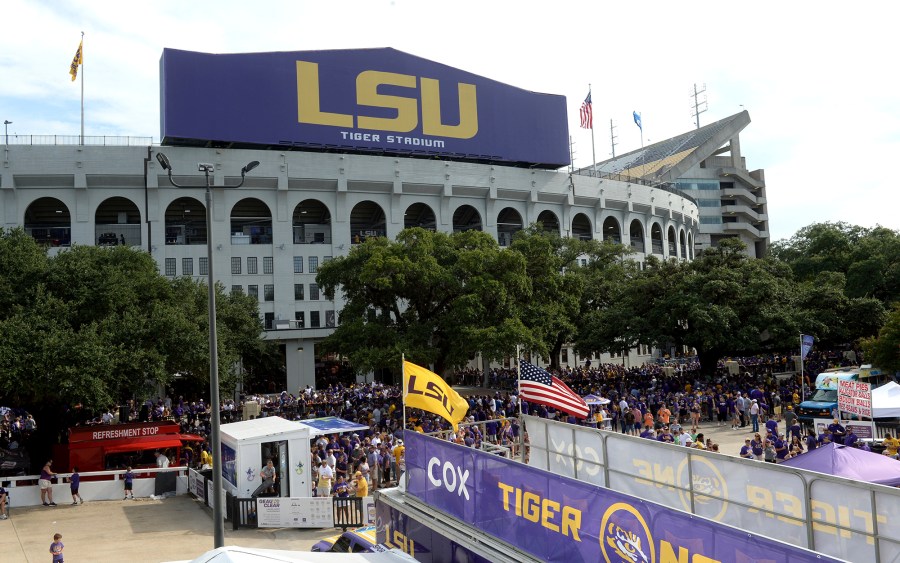

Louisiana is poised to hike taxes on sports betting to pump more than $24 million into athletic departments at the state’s most prominent public universities.
Legislation pending before Gov. Jeff Landry would make Louisiana the first state to raise taxes to fund college sports since a judge approved a landmark settlement with the NCAA allowing schools to directly pay athletes for use of their name, image and likeness (NIL). Anticipating the court’s approval, Arkansas this year became the first to waive state income taxes on NIL payments made to athletes by higher education institutions.
Advertisement
More states seem almost certain to adopt their own creative ways to gain an edge — or at least keep pace — in the rapidly evolving and highly competitive field of college sports.
“These bills, and the inevitable ones that will follow, are intended to make states ’college-athlete friendly,’” said David Carter, founder of the Sports Business Group consultancy and an adjunct professor at the University of Southern California. But “they will no doubt continue to stoke the debate about the `perceived’ preferential treatment afforded athletes.”
Duplantis raises his pole vault world record to 6.28 meters in front of home fans in Sweden
The new NCCA rules allowing direct payments to college athletes kick in July 1. In the first year, each Division I school can share up to $20.5 million with its athletes — a figure that may be easier to meet for big-time programs than for smaller schools weighing whether to divert money from other purposes. The settlement also continues to allow college athletes to receive NIL money from third parties, such as donor-backed collectives that support specific schools.
Louisiana bill sponsor: `We love football’
The Louisiana legislation won final approval just two days after a judge approved the antitrust settlement between the NCAA and athletes, but it had been in the works for months. Athletic directors from many of Louisiana’s universities met earlier this year and hashed out a plan with lawmakers to relieve some of their financial pressures by dividing a share of the state’s sports betting tax revenue.
Advertisement
The biggest question for lawmakers was how large of a tax increase to support. The initial proposal sought to double the state’s 15% tax on net proceeds from online sports betting. But lawmakers ultimately agreed on a 21.5% tax rate in a compromise with the industry.
One-quarter of the tax revenue from online sports wagering — an estimated $24.3 million — would be split equally among 11 public universities in conferences with Division I football programs. The money must be used “for the benefit of student athletes,” including scholarships, insurance, medical coverage, facility enhancements and litigation settlement fees.
The state tax money won’t provide direct NIL payments to athletes. But it could facilitate that indirectly by freeing up other university resources.
The legislation passed overwhelmingly in the final days of Louisiana’s annual session.
Advertisement
“We love football in Louisiana – that’s the easiest way to say it,” said Republican state Rep. Neil Riser, who sponsored the bill.
Smaller universities are feeling the squeeze
Many colleges and universities across the country have been feeling a financial squeeze, but it’s especially affected the athletic departments of smaller schools.
Athletic departments in the top Division I football conferences take in millions of dollars from media rights, donors, corporate sponsors and ticket sales, with a median of just 7% coming from student fees and institutional and government support, according to the Knight-Newhouse College Athletics Database.
Advertisement
But the remaining schools in Division I football bowl conferences got a median of 63% of the revenue from such sources last year. And schools without football teams got a median of 81% of their athletic department revenues from institutional and governmental support or student fees.
Riser said Louisiana’s smaller universities, in particular, have been struggling financially and have shifted money from their general funds to their sports programs to try to remain competitive. At the same time, the state has taken in millions of dollars of tax revenue from sports bets made at least partly on college athletics.
“Without the athletes, we wouldn’t have the revenue. I just felt like it’s fairness that we do give something back and, at the same time, help the general funds of the universities,” Riser said.
Other states are investing in college sports
Louisiana would become the second state behind North Carolina to dedicate a portion of its sports wagering revenues to colleges athletics. North Carolina launched online sports wagering last year under a state law earmarking part of an 18% tax on gross gaming revenue to the athletic departments at 13 public universities. The state’s two largest institutions were excluded. But that might be about to change.
Advertisement
Differing budget plans passed by the state House and Senate this year both would start allotting sports betting tax revenue to the athletic programs at the University of North Carolina at Chapel Hill and North Carolina State University. The Senate version also would double the tax rate. The proposals come a year after University of North Carolina trustees approved an audit of the athletics department after a preliminary budget projected about $100 million of debt in the years ahead.
Other schools also are taking actions because of deficits in their athletic departments. Last week, University of Kentucky trustees approved a $31 million operating loan for the athletics department as it begins making direct NIL payments to athletes. That came after trustees in April voted to convert the Kentucky athletics department into a limited-liability holding company — Champions Blue LLC — to more nimbly navigate the emerging financial pressures.
Given the money involved in college athletics, it’s not surprising that states are starting to provide tax money to athletic departments or — as in Arkansas’ case — tax relief to college athletes, said Patrick Rishe, executive director of the sports business program at Washington University in St. Louis.
“If you can attract better athletes to your schools and your states, then this is more visibility to your states, this is more potential out-of-town economic activity for your state,” Rishe said. “I do think you’re going to see many states pursue this, because you don’t want to be the state that’s left exposed or at a disadvantage.”
Latest News
Advertisement
Copyright 2025 Nexstar Media, Inc. All rights reserved. This material may not be published, broadcast, rewritten, or redistributed.
For the latest news, weather, sports, and streaming video, head to Louisiana First News.
-

 High School Sports2 weeks ago
High School Sports2 weeks agoParents Speak Out As Trans Pitcher Throws Shutout In MN State Quarterfinals
-

 College Sports3 weeks ago
College Sports3 weeks agoIU basketball recruiting
-

 Professional Sports2 weeks ago
Professional Sports2 weeks ago'I asked Anderson privately'… UFC legend retells secret sparring session between Jon Jones …
-

 Health2 weeks ago
Health2 weeks agoOregon track star wages legal battle against trans athlete policy after medal ceremony protest
-

 Professional Sports2 weeks ago
Professional Sports2 weeks agoUFC 316 star storms out of Media Day when asked about bitter feud with Rampage Jackson
-

 High School Sports3 weeks ago
High School Sports3 weeks agoThe Arizona Daily Star's top high school athletes, coaches and moments of the 2024
-

 Rec Sports2 weeks ago
Rec Sports2 weeks ago2x NBA All-Star Reacts to Viral LeBron James Statement
-

 College Sports2 weeks ago
College Sports2 weeks agoOKC’s Mark Daigneault knows what it takes to win championships. His wife has won a ton of them
-

 Social Media2 weeks ago
Social Media2 weeks agoControversial Athletics Gender Dispute Goes Viral After Riley Gaines Lashes Over Authorities
-

 NIL2 weeks ago
NIL2 weeks agoPatrick Mahomes in OKC for WCWS, praises NiJaree Canady and Texas Tech
































